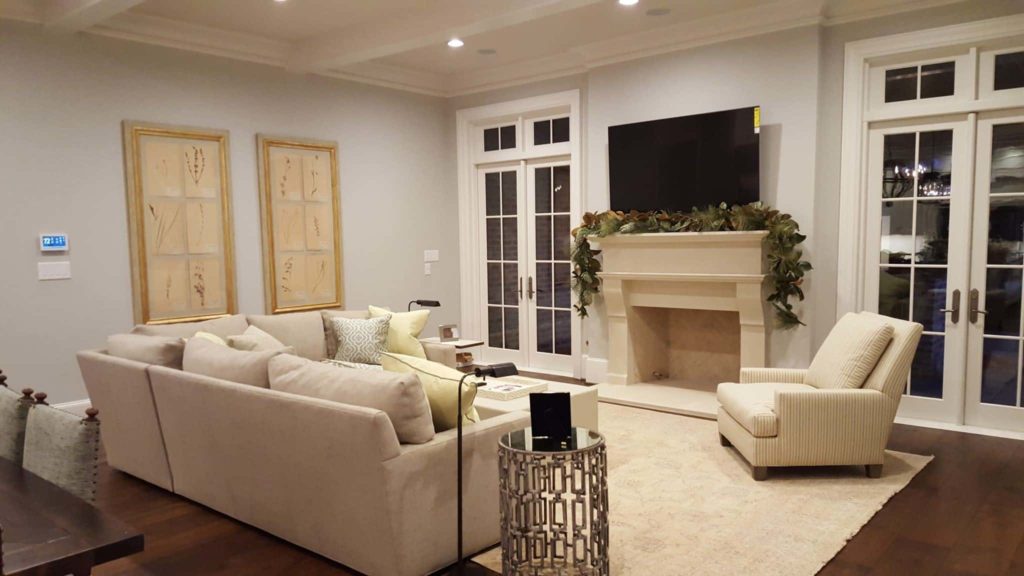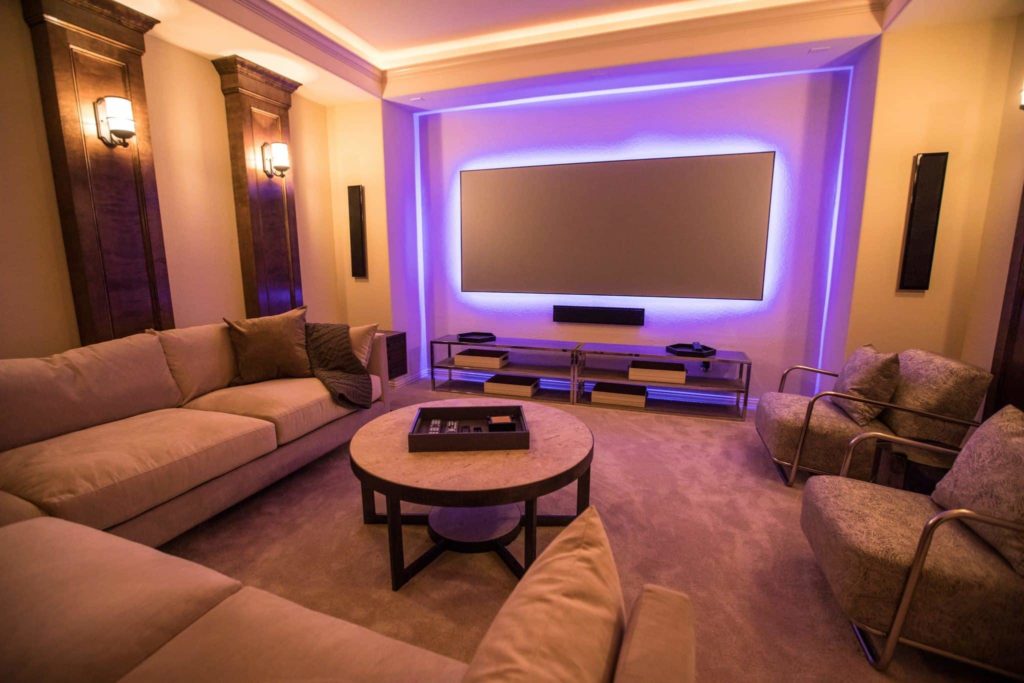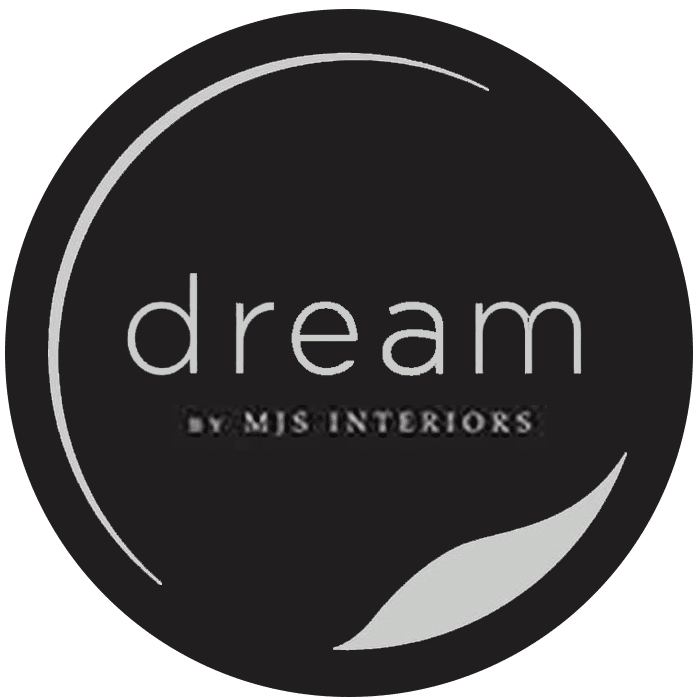Technology has become a part of the average home, but, without proper planning, it doesn’t necessarily blend with the best interior design. However, function, style, and comfort can be considered so you have a functional and well-designed interior. Dream by MJS Interiors not only specializes in interior design in Houston, TX but also integrating aspects of the smart home with elements of design.
What Is a Smart Home?
 A smart home uses many kinds of technology, some of which are immediately visible and others not. These technological elements, however, do not have to compromise visual appeal. For example, video equipment, speakers, and thermostats can be chosen so they are a natural blend with the interior design and architecture of your home.
A smart home uses many kinds of technology, some of which are immediately visible and others not. These technological elements, however, do not have to compromise visual appeal. For example, video equipment, speakers, and thermostats can be chosen so they are a natural blend with the interior design and architecture of your home.
The definition of the smart home has evolved somewhat over the past couple of decades. Exterior light timers back then would have been considered smart technology. Today, these are quite common, as are programmable thermostats that can control your HVAC system to ensure the temperature is comfortable any hour of the day. Smart home products include:
- An internet connection
- Automated lighting and temperature control
- Bluetooth, Wi-Fi, and other communications protocols
- Home security and safety systems, with various sensors/detectors
- Entertainment systems controlled by computer, phone, or tablet
- Appliances that can intercommunicate with one another
The 2018 Coldwell Banker Real Estate Smart Home Marketplace Survey found 32% of Americans have smart products at home. This is up 33% from last year’s finding of 24% of consumers. Potential homebuyers indicated they’d prefer pre-installed smart thermostats, fire detectors, carbon monoxide detectors, cameras, locks, and lighting in a home they’d purchase. Virtual reality is taking a step up, as well, as 77% said they’d prefer a virtual house tour before visiting prospective homes.1
The smart home originated in 1975, with a communication protocol known as X10.2 It used radio frequencies to deliver information via electrical wiring. The concept wasn’t all that different from what it is today. Transmitters could, in theory, send signals at specific times, turning on a device or light when a homeowner wanted. Since this technology was prone to radio interference, other home automation concepts sought to improve upon it.
Today, automated lighting, smart internet-connected TVs, thermostats, garage door openers, locks, and kitchen appliances are commonplace. A smart home is defined as much by its technology and benefits as its design. Interior design is as important as it has always been. Homeowners and buyers are seeking the benefits of technology, and Houston interior decorators are seeking to meet this demand.
Benefits of Smart Home Technology
The technologies now found in homes across America and the world have many benefits. Some of these include:
Security: Smart security cameras can monitor a home 24/7, even when occupants are away or on vacation. Applications enable them to view video feeds from anywhere in the world. Motion sensors can differentiate between residents and intruders. Some will even send a notification to local authorities in the case of suspicious behavior. In-home monitoring systems can track the well-being of the elderly, allowing loved ones to live at home rather than in a nursing or other care facility.
Remote control: Smart lighting systems can be turned on/off remotely or even turn on when someone enters the room. They are often capable of detecting the presence of an occupant, and automatically adjusting the lighting according to one’s preferences. Other examples include coffee makers connected to alarms and refrigerators that track ingredients to identify recipes, track expiration dates, and create shopping lists. Some even have interior cameras people can access on their smartphones!
House monitoring: Electrical monitors offer protection when an electric surge is detected. These can automatically turn off appliances. Water sensors can detect plumbing issues such as leaks or frozen pipes; these can even turn off the water before a major flood occurs. Devices can detect dangerous conditions that can lead to fires and floods, which can cause extensive damage and even destroy homes quickly.
Efficiency: One of the best smart home ideas is a system that learns occupants’ behaviors. Based on your schedule, the system can turn on the air conditioning before you get home from work. Other examples include irrigation systems that take care of the garden or houseplants on a schedule. In terms of efficiency, smart irrigation systems save water and smart air conditioners save electricity since you don’t need to leave the AC on all day.
Smart technology is a convenience as well. Internet-connected smart TVs allow us to access on-demand shows, videos, and music. Smart home technology has gotten more reliable and safer. Manufacturers continue to address concerns about hackers accessing consumer data or criminals gaining control of locks and security systems to break in. Interior designers have entered the equation as well, providing interior design for homeowners that focuses on technology from an aesthetic approach. As a result, various smart home design ideas have emerged.
Combining Intelligence with Comfort/Style
Technology and automation can effectively be used to improve interior design. Flat-screen TVs and smaller electronics take up less space. They also reduce the amount of clutter at floor level and on the walls. Automated lighting systems can be configured to accent certain areas and can more easily create the desired mood.
Not to mention, they can eliminate banks of switches on walls throughout the house. A lighting system can be controlled with the touch of a button, allowing someone to immediately change the intensity or highlight, for example, of an art collection or new coat of paint.
Automation also enables you to make the most of your interior design. It helps control blinds and drapes from remote, wireless devices. Technology can be integrated with any type of design, from rustic homes with barndoor-like hardware to ultra-modern residences.
Color has a major impact on mood throughout the home. With smart home technology, you’re not limited to selecting a specific coat of paint, type of tile, or other material. There are LED lighting systems capable of producing different colors of light. You can use white or yellow to make the room light and airy, shades of blue and green to create a relaxing mood or darker colors to provide a sense of warmth and intimacy. Infuse some red to boost the energy level when you have company or to boost guests’ appetites.
For a home office, blue is the most productive color.3 You might want to use shades of green for a bedroom, the energy of yellow for a kitchen, or red for a dining room. Some interior design technology trends, however, integrate the technological elements themselves into the design. Soundwall has developed audio speakers that combine function and visual appeal.
The exterior of their speaker systems is effectively camouflaged as a painting or photograph. Artwork can be selected or custom-made from a customer’s uploaded image, so it can effectively complement the interior design, while one can enjoy high audio quality, device compatibility, and a Wi-Fi connection.
Your living room, office, or media room can feature all the latest technology and automation features, yet still, be as stylish as they come. Yet comfort is essential as well. Speakers can complement the interior design, and soundbars have become popular. Fitting beneath a television, they use sound reflection to create a surround-sound effect, without placing bulky speakers throughout a room.
Latest Technology in Interior Design
 Computer technology is not just a trend in the home, but for designing it as well. Computers can be used to create floor plans, visualize a room, and integrate various elements from furniture to appliances and electronics, to paint color and lighting. Designers can use software to create solutions much faster and to transmit files to clients and contractors so projects get completed faster. Architects and designers can use software tools such as AutoCAD, a 3D design software tool from Autodesk, which serves the building, construction, and architectural industries.
Computer technology is not just a trend in the home, but for designing it as well. Computers can be used to create floor plans, visualize a room, and integrate various elements from furniture to appliances and electronics, to paint color and lighting. Designers can use software to create solutions much faster and to transmit files to clients and contractors so projects get completed faster. Architects and designers can use software tools such as AutoCAD, a 3D design software tool from Autodesk, which serves the building, construction, and architectural industries.
Interior design requires collaboration, planning, and time. Most homeowners struggle with articulating their ideas, but digital technology can help express their vision.
Design can also be applied to improving function. For example, touchless faucets are easier to use, and there are fewer worries about germs. Complete with flow control, these products are becoming more affordable for homeowners. Touch activated cabinets, bathtubs with LED screens to control music and bacterial filtration, and integrated device docking stations throughout the home are increasingly common design features.
Dream by MJS Interiors Focuses on Design and Function
With 28 years of experience, we know how to integrate high-end interior design with creativity for residential and commercial clients. We offer cost-effective options that are inspired by our travels, art studies, and mission to provide individualized results. Able to complete projects in six weeks, from new construction to remodeling, we can start a home design from scratch as well. To start, schedule a free consultation with a member of our team by submitting a message online or emailing michasel@dreambymjsinteriors.com.
For more information on services provided by our Houston interior decorators, continue browsing our website. To speak to our professional and friendly staff, call us at 713-999-1222.
Sources
- https://internetofthingsagenda.techtarget.com/definition/smart-home-or-building
- https://freshome.com/room-color-and-how-it-affects-your-mood/
